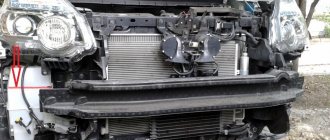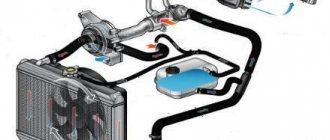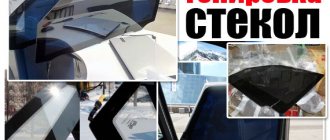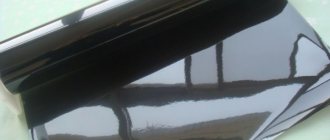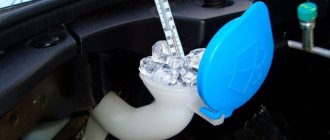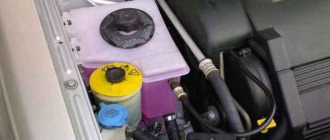When operating a car, many experienced owners often add citric acid to the washer reservoir, which helps eliminate all possible contaminants. This prevents the occurrence of various breakdowns, the elimination of which in the future will require significant financial costs. Let's talk in more detail about whether it makes sense to add citric acid or any other chemical to the washer reservoir.
Windshield washer device
Every driver knows that when undergoing a technical inspection of a car, one of the elements that is checked for functionality is the windshield cleaning unit. However, for some reason many do not understand this importance. They say that the engine, steering and gearbox are important elements in a car. But if the washer is acting up, then there is nothing wrong with that. But for convenience, as well as driver safety when driving, the windshield must be clean. A good view of the road allows you to avoid accidents in the first place.
The windshield cleaning unit consists of the following main elements:
- windshield wiper blades;
- windshield wiper trapezoid;
- washer reservoir;
- glass washer fluid;
- hoses;
- washer nozzles.
It is important to monitor the performance of all elements. Without one of them working, the mechanism will not be able to perform its main function - cleaning the windshield.
Windshield washer device
It is recommended to change windshield wiper blades 2 times a year. Some people do this more often, some less often. In any case, during the operation of the car, the driver often realizes that it is time to replace the blades - they simply stop coping with their function, do not remove dirt well, or smear it all over the windshield.
Washer nozzles have a longer service life. Occasionally you can clean them with a needle and regulate the flow of liquid.
Washer nozzles can be cleaned with a thin needle
The washer reservoir must always be filled at least half full with liquid, water or washer fluid. This is due to the fact that if there is a lack of fluid during operation, the washer motor may fail and “burn out” due to insufficient lubrication. The driver chooses which fluid to use. Let's look at the advantages and disadvantages of each.
washer tank
Removing the tank on a Lada Granta car is a matter of a few minutes.Removing the tank on a Lada Granta car is a matter of a few minutes.
Renault specialists, apparently having well learned the experience of Napoleonic campaign of 1812, used washer tanks on all their cars built on the B0 platform, which are relatively easy to dismantle. Starting from the very first Logan and ending with the newfangled Capture, the location of the washer reservoir remains unchanged - under the windshield closer to the right side of the car. Lada Largus, as you know, is from the same family.
Windshield washer fluids
Even from everyday life it is clear that glass can be cleaned of dirt using water or a special product. Water will help get rid of light dirt, but a special product will cope with any dirt.
As for the car, water can only be used when the temperature outside is positive. In winter, the water will turn into ice. This can lead to dire consequences. The pressure may cause the hoses and reservoir to rupture.
There are 2 types of windshield washer. The table shows the main characteristics of liquids.
| SHARE: |
| Type of liquid | Use temperature | Difference |
| For the summer season | from +1℃ and above | This liquid copes well with dirt. Removes midges and mosquitoes from glass. |
| For the winter season (non-freezing liquid) | from 0℃ and below | Does not freeze or turn into a mushy mass at subzero temperatures. |
It is important to purchase windshield washer fluid from trusted sellers who sell certified products. Otherwise, you may encounter the fact that the liquid will not cope with the windshield dirt (in the case of the summer version) or will freeze at subzero temperatures. Also, due to a poor composition, the washer may have an unpleasant, pungent odor, which can cause a headache and watery eyes for the driver. The first sign of low-quality washer fluid is that the price is too low. A good product cannot be cheap.
Tablets from abroad
A specialized washer fluid fights stains, of course, better due to the presence of so-called surfactants, that is, surfactants. They help dissolve fats and other organic matter. If you purchase them separately and add them to water, you will get an excellent “wash” that does not harm the insides of the car.
Surfactants are sold in concentrate form. These are tablets made from chemicals that can be found on online marketplaces and ordered by mail. Instructions for use are provided with the supplied product. It is necessary to read it carefully. Dilution ratios for concentrates vary. Can be 1:10 or 1:100 depending on the composition of the chemicals. But in general, one tablet is enough for a 4-liter canister of washer fluid. And the price of a pack of 20 tablets is approximately 250 rubles.
Stains on the body. What chemical liquids in the car can harm it? More details
Is it possible to pour water into the washer reservoir?
Water is usually used instead of windshield washer to save money. Water is usually poured into a tank from the tap, with the thought of saving. At least that's what drivers think. At first glance, this is exactly what it looks like. But I would like to reveal the second side of the coin.
If you pay attention to the structure of the windshield washer fluid, you will notice that it is a little “greasy,” so to speak. Thanks to special components, when supplied, the liquid lubricates the pump parts. Water does not have this function. This helps reduce the life of the pump. At one point, the pump may jam and stop working.
Using water instead of washer may adversely affect the operation of the windshield cleaning unit.
Don't forget that tap water contains chlorine. Due to this, deposits form in the tank and on the hoses. In addition, the water may even bloom in the tank, which will lead to clogging of the nozzles. Paying attention to such facts, it is worth thinking about the reasonableness of such savings.
Defrosting the washer
Sometimes it happens that the driver does not have time to change the composition in the windshield washer reservoir in time, and it gradually crystallizes.
And what to do with the liquid if it is frozen? That's right, defrost. There are several effective ways to do this:
- leave the car in a heated garage and wait;
- turn the engine on at idle to warm up the engine compartment;
- take it to the car wash and order a special defrosting service;
- if the tank is not full, you can pour boiling water inside;
- mix boiling water and anti-freeze concentrate, pour into the tank (first hot water, and then special liquid);
- add alcohol to the tank;
- use means to defrost locks and glass;
- use a regular household hair dryer with a suitable nozzle;
- remove the tank itself and take it to a warm room.
When to use windshield washer instead of water
Water to clean the windshield can (but, again, is not advisable) be used only at positive temperatures and only when driving around the city. In this case, the windshield will only be contaminated with dust, and water will handle the cleaning.
The first option when you should replace water with windshield washer is when traveling outside the city on the highway. The reason is simple. At speed, midges and mosquitoes remain on the windshield. And if during daylight hours the driver does not feel any discomfort while driving, then when the sun sets, the view of the road will deteriorate. Water cannot cope with such pollution on its own. It is only possible to clean the glass if the driver cleans the glass with a washcloth and water, which is unlikely.
The second option for changing windshield washer water is the onset of the winter season . The main thing is to do it before the temperature outside gets below freezing. It is clear that at the first minus, the water in the tank and hoses will freeze and will not perform its function. And it’s worse if these parts can’t withstand the pressure and rupture.
After repairing the washer reservoir, it is recommended to fill the reservoir with water for the first time. During this period, the integrity of the tank is checked. If after repair the tank leaks, only water will flow out. If no leaks are found, then drain the water and use washer fluid.
Homemade siphon
Either a large medical bulb or a device from any sprayer shown in the photo will allow you to start the siphon (create the required vacuum). Either a large medical bulb or a device from any sprayer shown in the photo will allow you to start the siphon (create the required vacuum).
Having completed all the above operations, refill the heated antifreeze liquid. We repeat the procedure as many times as necessary to completely defrost the tank. Try not to turn off the engine, but be careful not to be poisoned by exhaust gases. That is, in a confined space - a small garage, for example - the engine should not run.
Next, you should take care of the windshield washer pipes and nozzles. If you used engine compartment heating, the hot air will warm these parts and components. You can also use a household hairdryer, but after defrosting the tank, you can immediately spray them with high-quality anti-freeze.
In conclusion, I would like to remind you that it is easier to prevent a disease than to treat it. I wish you a clear road and an excellent view!
What to do if the washer is frozen?
How to drain water from a washer barrel - step-by-step instructions with photos and videos
In order to say with 100% certainty how to drain water from the windshield washer reservoir, you need to know the make and model of the car. Since each car model has an individual technical structure. The technical documentation contains information about the process of replacing windshield washer fluid.
However, one method is definitely suitable for all brands - this is spraying water through nozzles. This option is very simplified and, at the same time, complex. It is recommended to use it only if there is not much liquid left in the tank, and there is no time to go to a service center to drain the water.
The easiest way to get rid of water in the reservoir is to drain it through the nozzles, but this method can “kill” the washer motor
A warm box will solve the problem
The simplest thing you can do is go into a heated room for a few hours. The ice in the tank will melt naturally without causing any harm. Also, the advantage of this method is that you can defrost the liquid not only in the washer reservoir, but also in the hoses. A service station, car wash or heated garage/parking lot is suitable as a warm box.
But among all the positive aspects of this method, there are also several disadvantages:
- Time. Not every person will find so much free time to while away it in a warm room, especially on weekdays. Also, few people are ready to “part with” their car for several hours, especially when they need to move around with something.
- Money. You will have to pay for the car to spend some time in a warm room. For example, in the northern regions, parking lots/car washes/service stations earn a considerable share from those who just need a warm place.
Defrosting with hot water
If you notice that the washer reservoir is frozen and do not have time to drive away from your house, you can return, boil water in a kettle and take it with you to the car. Before adding hot water, the engine must be warmed up to operating temperature so that the engine compartment warms up at least a little. This is done in order to defrost the ice in the tubes.
When the engine has warmed up, you need to pour approximately hot water into the washer reservoir (it is important not to use boiling water) and wait a few minutes. After this, you can try applying water to the glass. This method is very effective and will help solve the problem without much financial or time investment. But not in all situations hot water will help defrost the tank. This method will not work if:
- your washer reservoir is more than half full. The hot water temperature is not enough to defrost that amount of ice;
- The outside temperature is below -5 degrees. Even if you manage to defrost the liquid in the tank, the ice in the tubes will not melt in severe frost;
- you want to save the washer fluid in the tank for later use in the spring. Once you mix washer fluid with water, you can forget about its effectiveness.
Article on the topic: Soundproofing of internal combustion engines in theory and practice
